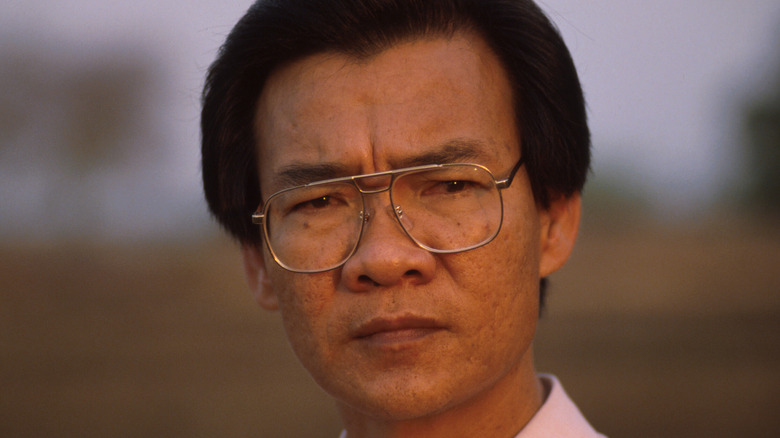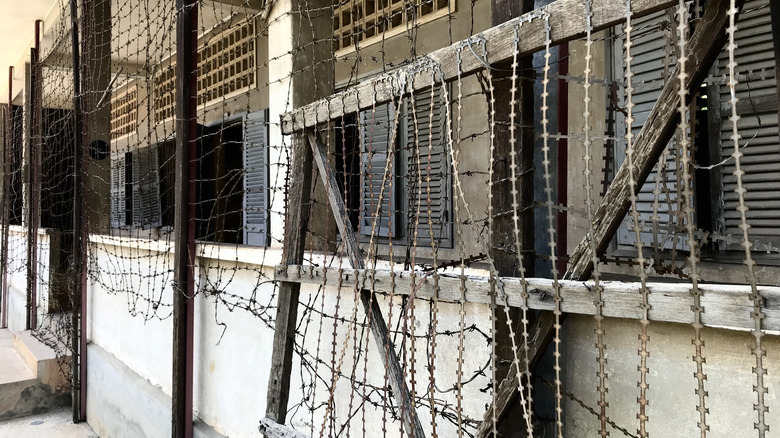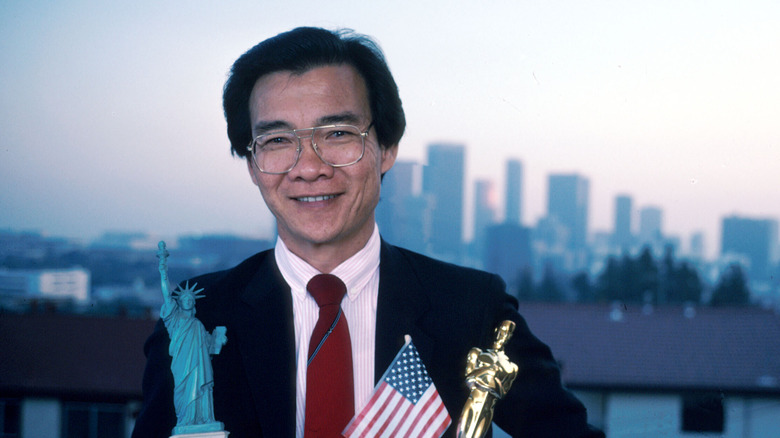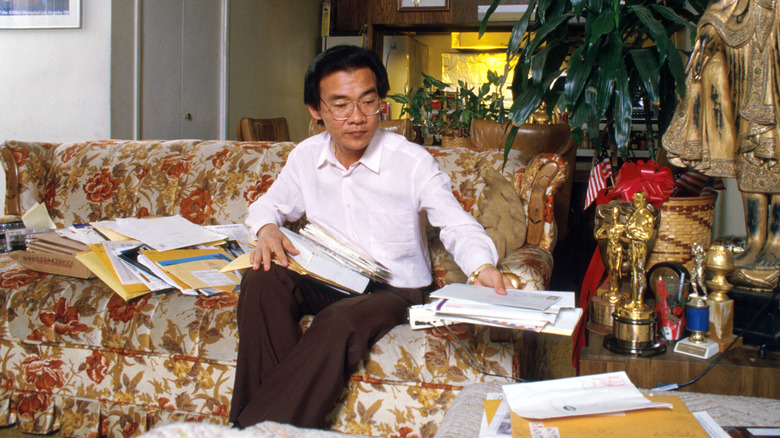The Conspiracy Surrounding The Death Of The Killing Fields Actor Haing Ngor
One of the ugliest periods of history in the latter half of the 20th century took place in Cambodia between 1975-1979. The Khmer Rouge was a murderous regime that, under the leadership of dictator Pol Pot, caused approximately 2 million deaths, according to the University of Minnesota. The regime celebrated an extreme form of Marxism and, keen to see the country become a "pure" socialist utopia at all costs, emptied Cambodia's cities and sent the people to work in the country, where they were starved and worked to death. Dissidents were imprisoned under impossibly brutal conditions.
The events were immortalized in the 1984 film "The Killing Fields," in which a real Cambodian man who had lived through the events was cast to play another victim of the regime. Haing S. Ngor won critical acclaim for his portrayal of Dith Pran (another victim of the regime) and had a brief film career following his win. In 1996, he was killed in what appeared to be a botched robbery, according to the Los Angeles Times. However, decades later, rumors persist that he was actually killed on orders from remnants of the Khmer Rouge regime in revenge for his appearance in the film.
Year Zero
Prior to 1970, Cambodia was ruled by Prince Norodom Sihanouk (via BBC News). However, in the jungles was a group of men keen to see Cambodia transformed into a Marxist utopia. In 1975, the Khmer Rouge, led by a man named Saloth Sar — who would later change his name to Pol Pot — took power.
April 17, 1975 was what the regime called the beginning of "Year Zero" (per Al Jazeera). Believing that the cities had been corrupted by Western, capitalist ideals, the regime emptied the cities, with a view toward every last person in the country becoming a poor, uneducated peasant (via Holocaust Memorial Day Trust). Money was abolished, children were separated from their parents, and all personal and human rights were eliminated. The regime particularly hated professionals and intellectuals, and even people with glasses or who spoke a foreign language could be labeled enemies of the state and sent to brutal prison camps (a memorial to the victims is pictured above), according to BBC News.
The Killing Fields
Over the course of the next five years, an estimated 2 million people died due to the atrocities of the Khmer Rouge regime (via BBC News). The regime renamed the country Kampuchea and set about putting the whole country to work in the countryside, tending crops or building canals, for example (via University of Minnesota). Food and medicine management was nonexistent, and hundreds of thousands starved to death and/or died of overwork in what would come to be known as "the killing fields."
Some fared even worse, if that was possible. Fearing the educated as enemies of the state, the middle classes, as well as professionals and the educated — even those who wore glasses — were put into prison camps. There they faced starvation and extreme torture. At one of the most notorious prisons, S-21 (pictured above), some 17,000 men, women, and even children were imprisoned during the regime's reign, according to BBC News.
Dith Pran and Haing S. Ngor
As mentioned previously, the Khmer Rouge hated professionals and intellectuals, and that meant that Dr. Haing S. Ngor and his family were targeted. As Vice reports, he spent four years in a Cambodian prison, being tortured and starved along with his wife, who died in prison. According to Roger Ebert's website, weighing only 50 pounds and keeping himself alive by eating termites and other insects, he escaped by crawling to safety, eventually making his way to the U.S.
Dith Pran was, according to the foundation that bears his name, a photojournalist working in the region when Cambodia fell to the Khmer Rouge. Other journalists were able to leave, but Pran was not. He was forced to hide the fact that he was a professional and pretended that he was a taxi driver. Like untold millions before him, he was sent to the countryside for torture and forced labor, and he was the one who coined the term "the killing fields" to describe the horrors of the regime. He later escaped and, like Ngor, eventually made his way to the United States.
Ngor's Performance In The Killing Fields
Back in the early 1980s, as the Los Angeles Times reports, director Roland Joffé was putting together "The Killing Fields," a film about the atrocities of the Khmer Rouge regime, based on the story of journalist Sydney Schanberg. Schanberg was friends with Dith Pran, and indeed the two men even spent some time together as Phnom Penh was falling. When the time came to cast Pran, Joffee went with a Cambodian man who had himself suffered under the same regime: Haing S. Ngor.
Ngor, despite having had zero acting experience, brought rave reviews for his performance. As YellowBridge reports, he won the Academy Award for best supporting actor, becoming one of only two non-actors to take home an acting award (the other, according to the Chicago Tribune, was Harold Russell for "The Best Years of Our Lives").
By this time, Cambodia was free of the Khmer Rouge, the regime having been usurped following an invasion by neighboring Vietnam. However, they weren't eliminated but instead retreated back into the jungles; as of 2016, according to The Diplomat, members of the regime were still around, and a few even held government positions.
Did The Khmer Rouge Murder Haing S. Ngor?
On February 25, 1996, Haing S. Ngor was murdered near his Los Angeles home (via Vice). Officially, he was a victim of street crime — three members of the Oriental Lazy Boyz gang were convicted of his murder and even did time for it. However, a rumor persists that Pol Pot himself had him murdered.
Pot was certainly alive at this time (he died in April 1998, according to History), and though by this time they hadn't ruled Cambodia for nearly two decades, the Khmer Rouge still wielded some power there. "Haing Ngor was killed because he appeared in the film 'The Killing Fields,'" said Kang Kek Ieu, via the Los Angeles Times. The former Khmer Rouge prison chief made the remarks at a United Nations-backed tribunal in Phnom Penh that was, at the time, reviewing the crimes committed by the regime.
The idea that the regime was behind this murder wasn't lost on the LAPD, either. "Knowing that this man was a human rights guy and deeply involved in Cambodia, the logical place to look would be to see if there is any Khmer Rouge link," said Adalberto Luper (per the Los Angeles Times). However, an investigation failed to turn up any link between Ngor's death and the regime, and officially, his death remains a homicide as a result of a gang-related robbery.





